- Benefits of Winter Planting
- Enhanced Garlic Growth
- Protection Against Pests and Diseases
- 1. Crop Rotation
- 2. Mulching
- 3. Companion Planting
- 4. Regular Inspections
- 5. Organic Pest Control
- 6. Proper Watering and Drainage
- 7. Clean and Sanitize Tools
- 8. Disease-Resistant Varieties
- Higher Yield
- Time-saving Process
- Stronger Root Development
- Increased Cold Tolerance
- The effect of cold tolerance on garlic yield
- Early Harvesting
- Select Early Maturing Varieties
- Plant in the Fall
- Provide Proper Care
- Monitor Bulb Development
- Harvesting Techniques
- Enjoying the Early Harvest
- Weed Suppression
- 1. Thick Mulch Layer
- 2. Weed Prevention
- 3. Dense Garlic Canopy
- 4. Maintenance and Weed Control
- “Question-Answer”
- Why is winter planting a productive way to prepare and plant garlic beds?
- When is the best time to winter plant garlic?
- How do I prepare the garlic bed for winter planting?
- Can I plant garlic cloves directly in the ground during winter?
- What are the benefits of winter planting garlic?
- “Video” How To Grow Garlic – The Definitive Guide For Beginners
When it comes to growing garlic, winter planting can be a highly productive method. Planting garlic in the winter allows it to establish strong roots during the cold months, resulting in larger bulbs come springtime. This technique is especially beneficial for gardeners in areas with moderate climates, where the ground doesn’t freeze solid.
Preparing the beds
Before planting garlic in the winter, it’s important to prepare the beds properly. Start by clearing the area and removing any weeds or debris. Next, enrich the soil with organic matter, such as compost or well-rotted manure, to provide the garlic with the necessary nutrients. Use a garden fork or tiller to incorporate the organic matter into the soil, ensuring it is well-mixed and crumbly.
Tip: Garlic prefers well-drained soil, so make sure the beds have good drainage to prevent rotting.
Planting the garlic
Once the beds are prepared, it’s time to plant the garlic cloves. Break apart the garlic bulbs into individual cloves, being careful not to damage them. Choose the largest, healthiest cloves for planting, as they will produce the best results. Plant the cloves with the pointed end facing up, about 2 inches deep and 4-6 inches apart. Cover the cloves with soil and gently firm it down.
Tip: Consider mulching the garlic beds with straw or chopped leaves to provide insulation and protect the young plants from extreme cold.
Caring for the garlic
Once planted, the garlic beds should be watered well. Watering helps the cloves to settle into the soil and ensures good contact between the roots and the surrounding earth. Throughout the winter, keep an eye on the beds and water as needed, ensuring they don’t dry out completely. Come springtime, as the days get longer and the temperatures start to rise, the garlic will begin to emerge and grow.
By winter planting garlic beds, gardeners can take advantage of the colder months to establish strong roots and encourage healthy growth. With proper preparation and care, winter-planted garlic can yield larger bulbs and a bountiful harvest come summer.
Benefits of Winter Planting
Early Root Development: Winter planting allows garlic bulbs to develop a strong root system before the growing season begins. This early root development leads to healthier plants and larger bulbs at harvest time.
Reduced Competition with Weeds: By planting garlic in the winter, you can take advantage of the dormant period for weeds. This reduces competition for nutrients, sunlight, and water, giving your garlic plants a better chance of thriving.
Cold Treatment: Winter planting exposes garlic to colder temperatures, which is beneficial for bulb formation and maturity. Cold treatment can enhance the flavor and quality of the garlic bulbs.
Extended Growing Season: By starting the garlic planting process in winter, you can extend the growing season. Garlic planted in winter will be ready for harvest earlier in the summer, allowing you to enjoy fresh garlic sooner.
Improved Crop Yield: Winter planting gives the garlic plants a head start, resulting in healthier plants and increased crop yields. With proper care and cultivation, you can expect a bountiful harvest of garlic bulbs.
Natural Pest Control: The colder winter temperatures can help reduce the population of pests and insect pests that commonly attack garlic plants. This can result in fewer pest problems and a healthier crop overall.
Reduces Spring Workload: By planting garlic in winter, you can spread out your gardening tasks and reduce the workload in the busy spring season. This allows you to focus on other gardening tasks, knowing that your garlic plants are already established.
Enhanced Garlic Growth
Winter planting can significantly enhance the growth of garlic. By planting garlic in the winter, you can provide it with a longer growing season and allow it to establish strong roots before the onset of spring.
Here are a few ways winter planting can enhance garlic growth:
- Increased Cold Resistance: Garlic planted in the winter is exposed to colder temperatures, which can help increase its cold resistance. This can lead to healthier and stronger plants that are more resilient to extreme cold conditions.
- Early Sprouting: Winter-planted garlic often starts sprouting earlier in the spring compared to garlic planted in the traditional planting season. This gives the garlic a head start and allows it to take advantage of the early spring growing conditions.
- Mature and Larger Bulbs: Winter-planted garlic has more time to grow and develop before it is ready to be harvested. This extra time results in larger bulbs with more cloves, providing you with a bountiful garlic harvest.
- Less Competition: Planting garlic in the winter means that there is less competition from other plants for resources such as sunlight, water, and nutrients. This can allow the garlic to grow more vigorously and produce better yields.
- Weed Suppression: Winter-planted garlic can suppress weed growth as it establishes itself in the garden. The garlic plants act as a natural weed suppressant, reducing the need for extensive weeding and allowing the garlic to grow without competition from weeds.
By taking advantage of the benefits of winter planting, you can enhance the growth of your garlic and enjoy a successful garlic harvest.
Protection Against Pests and Diseases
When planting garlic in winter, it’s important to take measures to protect your plants against pests and diseases. Here are some strategies you can use to ensure the health of your garlic beds:
1. Crop Rotation
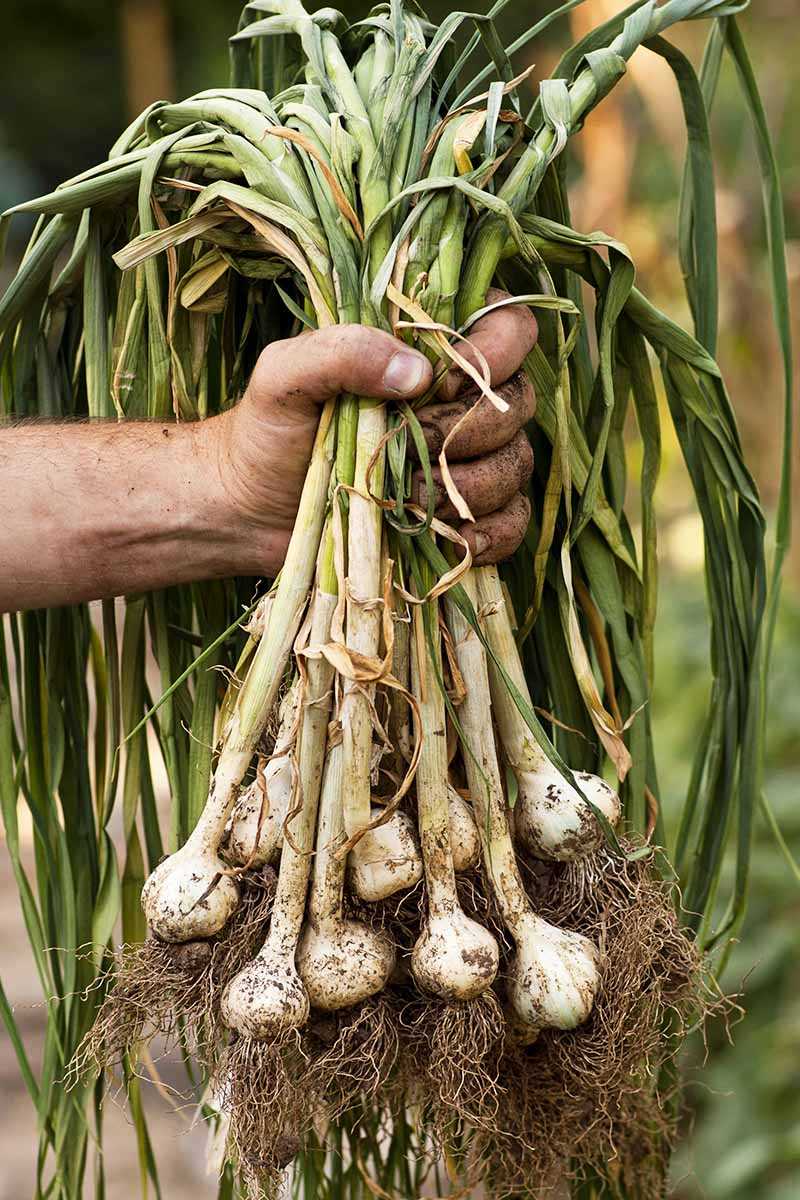
Rotating your crops is an effective way to minimize the risk of pest and disease outbreaks. Avoid planting garlic in the same spot every year, as this can lead to a buildup of pests and pathogens in the soil. Instead, practice crop rotation by planting garlic in different areas of your garden each year.
2. Mulching
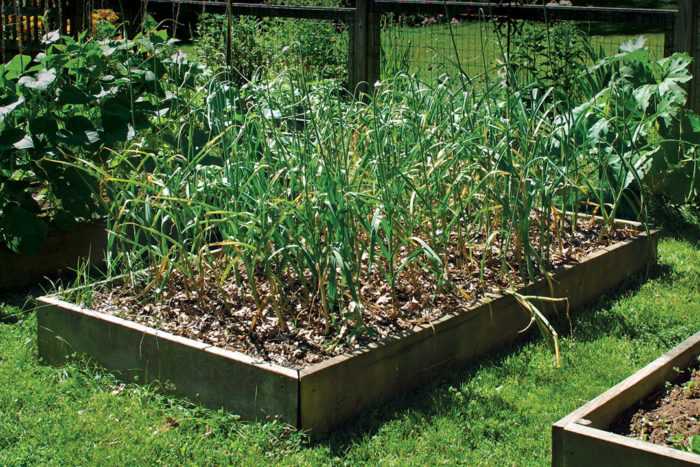
Applying a layer of mulch to your garlic beds can help suppress weeds and create a barrier against pests and diseases. Organic mulch, such as straw or shredded leaves, can also improve soil moisture retention and add nutrients to the soil as it breaks down over time.
3. Companion Planting
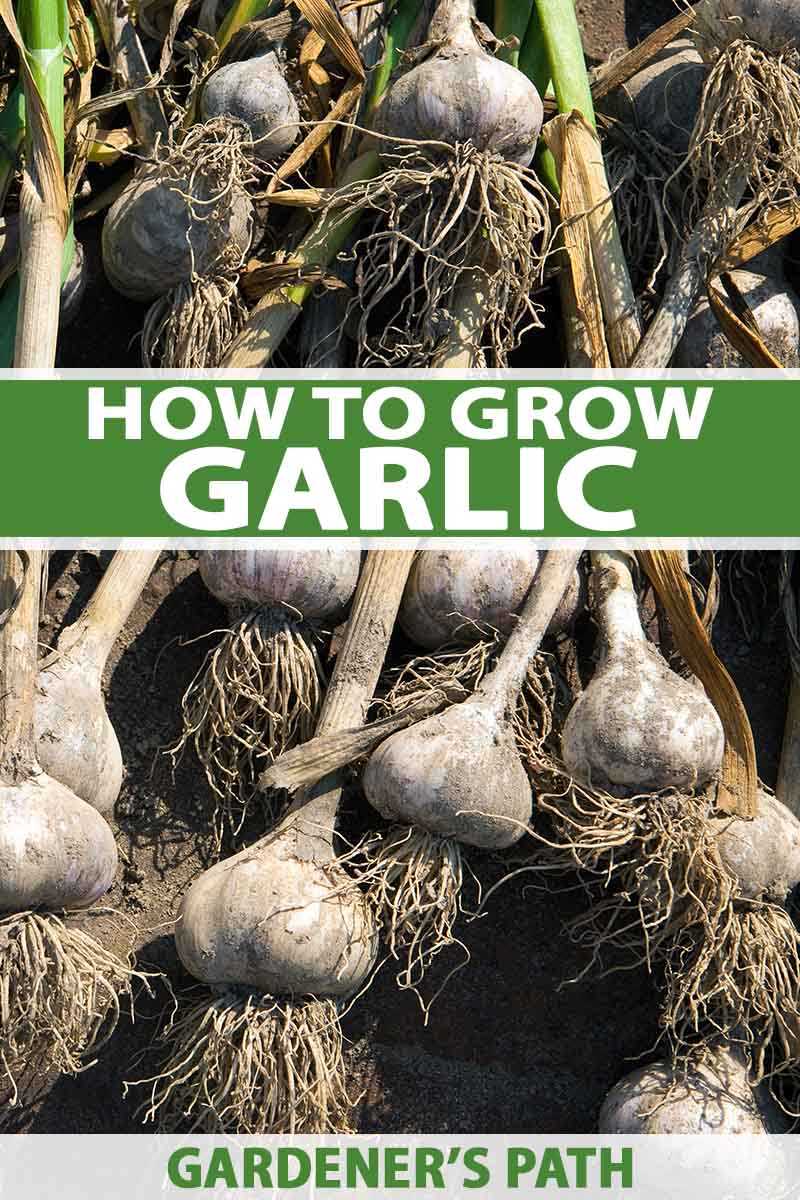
Planting garlic alongside pest-repellent crops can help deter pests and reduce the risk of infestation. For example, interplanting garlic with marigolds or chives can repel aphids and other insect pests. Similarly, planting garlic with alliums like onions or leeks can help prevent fungal diseases.
4. Regular Inspections
Regularly inspect your garlic plants for signs of pests or diseases. Look for chewed leaves, discoloration, or unusual growth patterns. Early detection can help you take immediate action to prevent further damage.
5. Organic Pest Control
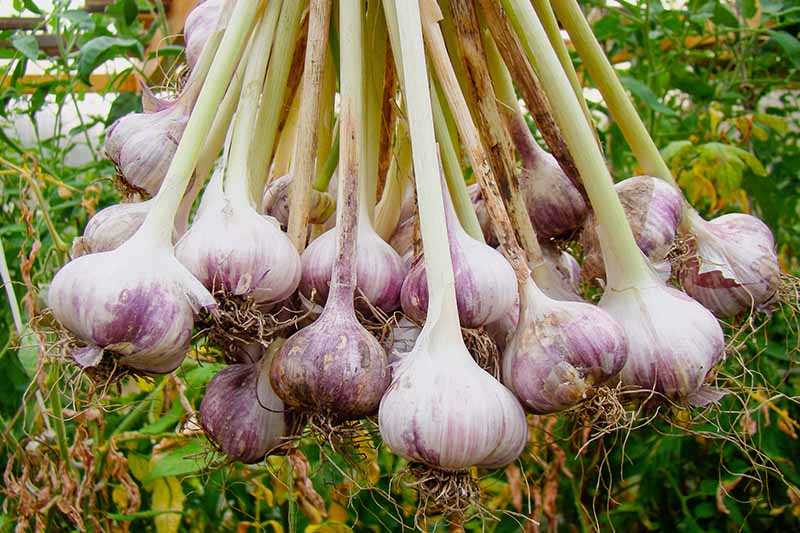
If you spot pests on your garlic plants, consider using organic pest control methods, such as insecticidal soap or neem oil. These options are generally safer for beneficial insects and the environment compared to synthetic pesticides.
6. Proper Watering and Drainage
Overly wet or waterlogged soil can promote the development of diseases, such as fungal infections. Ensure that your garlic beds have proper drainage to prevent waterlogged conditions. Additionally, avoid overwatering, as garlic plants prefer slightly drier soil.
7. Clean and Sanitize Tools
Pests and diseases can spread through contaminated tools and equipment. Clean and sanitize your gardening tools regularly to minimize the risk of cross-contamination. Use a solution of bleach or alcohol to disinfect your tools between uses.
8. Disease-Resistant Varieties
Consider planting disease-resistant varieties of garlic to further protect your plants. These varieties have been bred to withstand common diseases and pests, reducing the need for intensive disease management.
By implementing these strategies, you can create a healthier environment for your garlic plants and increase your chances of a successful harvest.
Higher Yield
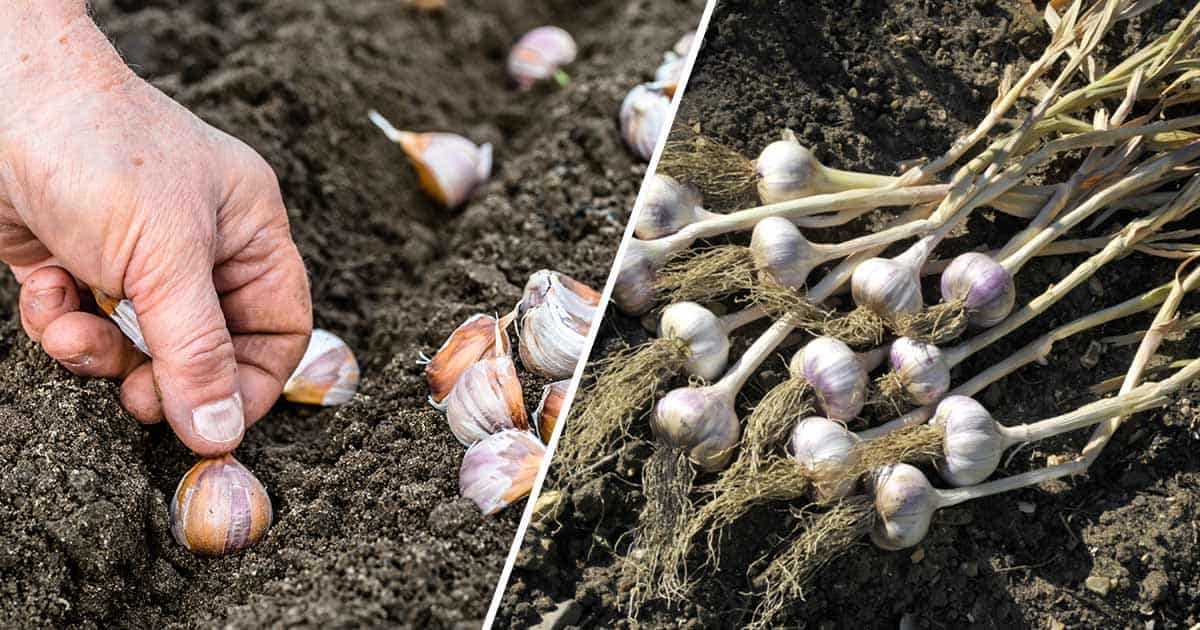
Winter planting has been proven to increase garlic yield compared to spring planting. This is because garlic bulbs need a period of cold dormancy to develop properly. By planting in the winter, the bulbs have a longer period of cold weather, allowing them to grow larger and develop more cloves.
In addition, winter planting allows garlic to establish a strong root system before the warmer temperatures of spring arrive. A well-established root system helps the plants access nutrients and moisture more efficiently, resulting in healthier and more productive garlic plants.
Another factor that contributes to higher yield is the reduced competition from weeds and pests. Winter planting gives garlic a head start, as most weeds and pests are less active during the colder months. This gives the garlic plants the opportunity to grow without the interference of competing plants and pests, resulting in larger bulbs and higher overall yield.
Overall, winter planting provides the ideal conditions for garlic to develop and grow, resulting in higher yield and better quality bulbs. By taking advantage of the winter months, gardeners can ensure a successful garlic harvest in the following summer or early fall.
Time-saving Process
Winter planting is a time-saving process that allows you to get a head start on your garlic beds before the growing season begins. By planting your garlic in the winter, you can utilize the dormant period of the plant and ensure it has ample time to establish strong roots and grow before the spring.
To begin the time-saving process, you will need to prepare your garlic beds. This can be done by clearing away any debris or weeds from the area and loosening the soil with a garden fork or tiller. Adding organic matter, such as compost or well-rotted manure, can also help improve soil quality and fertility.
Once your garlic beds are prepared, it’s time to plant your cloves. Break apart the garlic bulb into individual cloves, making sure to leave the papery skin intact. Dig a small hole for each clove, about 2-3 inches deep and 4-6 inches apart.
Place each clove in the hole with the pointed end facing up and the flat end facing down. Cover the cloves with soil and gently pat it down to ensure good soil-to-clove contact. Water the planted cloves thoroughly to settle the soil and provide moisture.
After planting, it’s important to protect your garlic from harsh winter conditions. Mulching is a great way to insulate the soil and protect the cloves from frost. Apply a layer of organic mulch, such as straw or shredded leaves, around the base of the plants.
Throughout the winter, it’s important to monitor your garlic beds for weeds and water as needed. While garlic doesn’t require as much water during the winter months, it’s still important to keep the soil moist but not waterlogged. Over-watering can lead to rot and disease.
In the spring, you will begin to see green shoots emerging from the soil. This is a sign that your garlic is growing and establishing itself. As the weather warms up, continue to monitor for weeds and provide occasional water to ensure optimal growth.
By utilizing the winter planting method, you can save time and ensure a productive garlic crop. With the proper preparation and care, your garlic beds will be ready for harvest in the summer, providing you with delicious, homegrown garlic for all your culinary needs.
Stronger Root Development
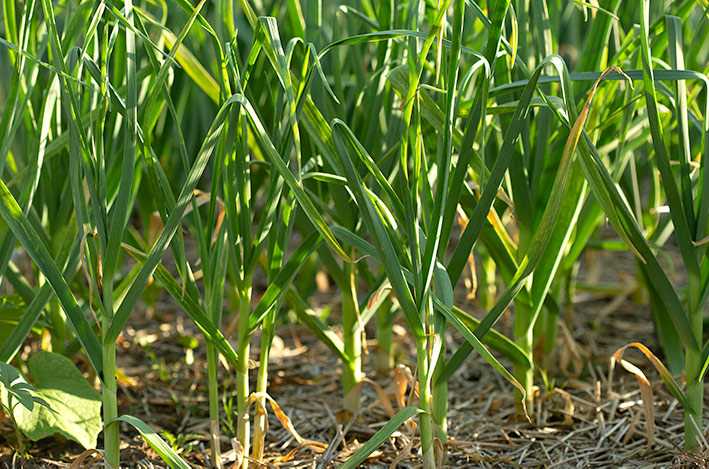
One of the benefits of winter planting for garlic beds is the stronger root development it promotes. Here are a few reasons why this occurs:
- Colder temperatures: Winter planting exposes the garlic cloves to colder temperatures, which encourages the development of stronger and more resilient root systems. The cold temperatures stimulate root growth and allow the roots to establish themselves deeply in the soil.
- Frozen soil: The freezing and thawing cycles of winter help break up compacted soil, creating channels for the garlic roots to penetrate deeper into the ground. This allows the roots to access more nutrients and water, resulting in healthier and more robust plants.
- Reduced competition: Winter planting reduces competition from other plants for nutrients and resources. With fewer plants growing during the winter months, the garlic cloves have less competition for sunlight, water, and nutrients. This allows them to focus their energy on root development, leading to stronger and more productive garlic plants.
The combination of colder temperatures, frozen soil, and reduced competition during winter planting promotes stronger root development in garlic beds. This leads to healthier and more productive garlic plants in the coming growing season.
Increased Cold Tolerance
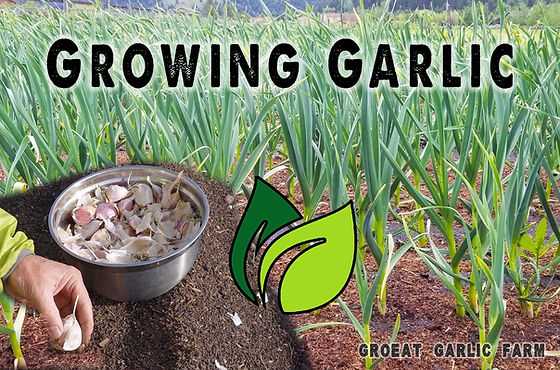
Growing garlic in winter comes with the benefit of increased cold tolerance. By planting garlic in the colder months, the bulbs have ample time to develop and establish their root system before the main growth period in spring. This prolonged exposure to cold temperatures allows the garlic plants to develop stronger cell walls and increase their resistance to freezing temperatures.
Increased cold tolerance in garlic is essential for areas with harsh winter climates. It enables the plants to survive frost and cold snaps, ensuring a successful harvest in the following summer. Winter planting also exposes the garlic cloves to a period of vernalization, which triggers their flowering and bulb formation signals. This improves the overall quality and size of the harvested garlic bulbs.
In addition to enhancing cold tolerance, winter planting offers gardeners the advantage of a longer growing season. By starting the garlic plants early, they have more time to establish and grow, resulting in larger bulbs and higher yields. Winter-planted garlic also tends to have a milder flavor compared to spring-planted garlic, making it a favored choice for culinary enthusiasts.
The effect of cold tolerance on garlic yield
Garlic plants with increased cold tolerance have a higher chance of survival during harsh winter conditions. This resilience allows the plants to continue growing, despite the challenging environment. As a result, the final yield of winter-planted garlic tends to be higher compared to spring-planted garlic varieties.
Cold-tolerant garlic plants are better equipped to handle fluctuations in temperature, heavy snowfall, and icy conditions. They can endure frosts that would harm less cold-hardy varieties, ensuring the survival of the plants until spring. This increased cold tolerance also aids in reducing disease and pest pressure, as garlic plants that have experienced vernalization are better prepared to fight off potential threats.
Ultimately, the increased cold tolerance of winter-planted garlic contributes to a more productive harvest and a successful garlic growing season.
Early Harvesting
Early harvesting is a key technique in winter planting that allows gardeners to enjoy an early harvest of garlic. By selecting the right varieties and implementing proper planting techniques, gardeners can successfully harvest garlic bulbs early in the season.
Select Early Maturing Varieties
Choosing early maturing garlic varieties is crucial for achieving an early harvest. Look for varieties that mature in a shorter amount of time, usually around 90 to 120 days. Some popular early maturing garlic varieties include Early Italian Purple, Early Red Italian, and Early White.
Plant in the Fall
To prepare for early harvesting, it is important to plant the garlic bulbs in the fall, typically September or October. This allows the cloves to establish roots before the winter dormancy period. Planting at the right time ensures that the garlic has enough time to grow and mature before the onset of spring.
Provide Proper Care
Giving the garlic plants proper care throughout their growth cycle is essential for early harvesting. This includes regular watering, providing adequate sunlight, and applying organic fertilizers. Proper care helps the bulbs develop fully and increases the chances of achieving an early harvest.
Monitor Bulb Development
Regularly monitor the development of the garlic bulbs to determine when they are ready for harvesting. As the bulbs mature, they will develop large, full cloves and the green foliage will start to dry up. This is an indication that the garlic is ready to be harvested.
Harvesting Techniques
When it comes to harvesting garlic early, there are two main techniques: pulling and lifting. Pulling involves gently pulling the garlic bulbs from the ground, while lifting involves using a garden fork to lift the bulbs out of the soil. Both techniques can be effective, but it is important to be careful and avoid damaging the bulbs during the harvesting process.
Enjoying the Early Harvest
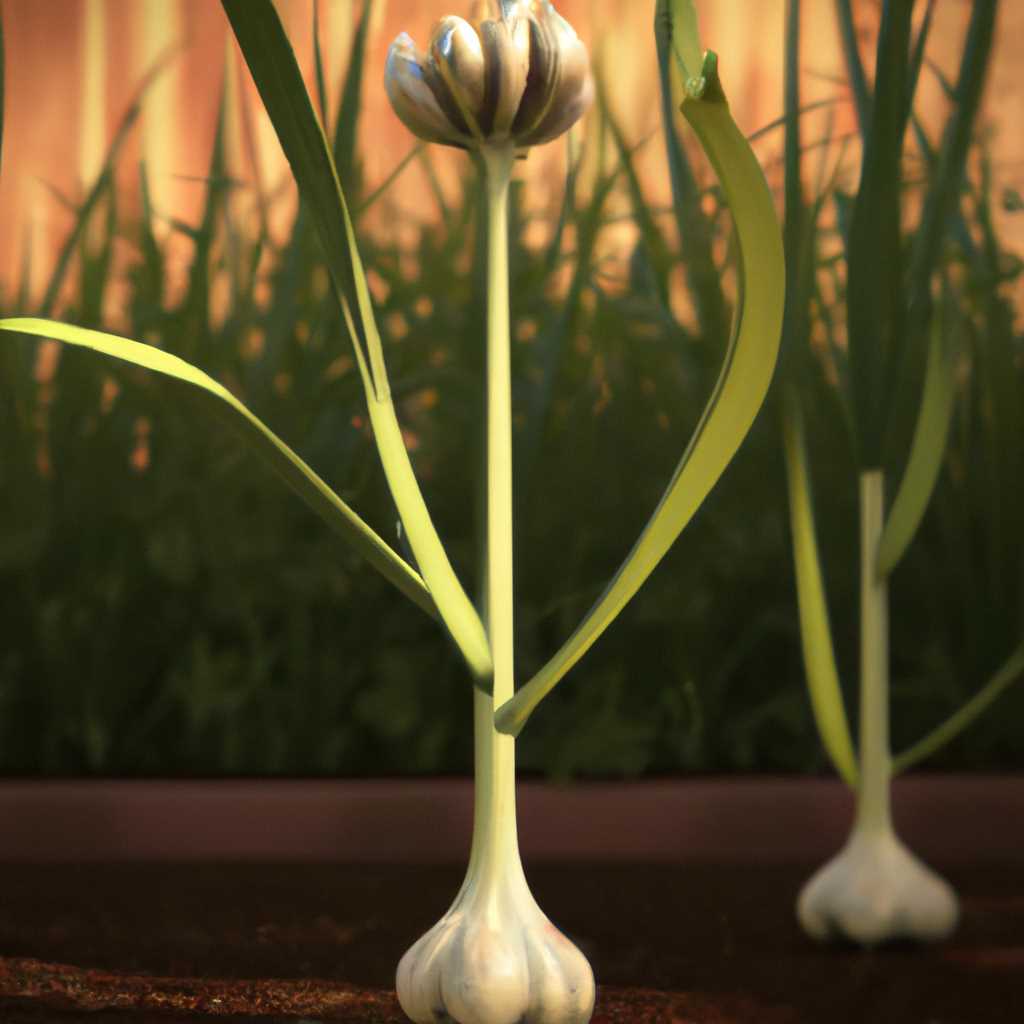
Once the garlic bulbs have been harvested, they can be used immediately in various culinary dishes or stored for later use. Early harvested garlic tends to have a milder flavor compared to fully matured garlic, but it is still packed with delicious aroma and taste.
| Advantages of Early Harvesting | Disadvantages of Early Harvesting |
|---|---|
|
|
Weed Suppression
Weed suppression is an important aspect of having a successful garlic bed. Weeds compete with garlic plants for nutrients, water, and sunlight, and can significantly reduce the yield of your crop if not properly managed. Winter planting can help with weed suppression in several ways.
1. Thick Mulch Layer
One of the key methods for suppressing weeds in a garlic bed is to apply a thick layer of mulch. Winter planting allows you to apply mulch early in the season when there are fewer weeds present. This mulch layer acts as a physical barrier that prevents weed seeds from germinating and reaching the surface. It also helps to conserve soil moisture and regulate soil temperature, creating a more favorable environment for garlic growth.
2. Weed Prevention
By planting garlic in the winter, you can take advantage of the cooler temperatures and slower weed growth. This gives you a window of opportunity to remove existing weeds before planting your garlic cloves. By clearing the bed of weeds and their roots, you can minimize the competition for resources and create a clean starting point for your garlic crop.
3. Dense Garlic Canopy
Once winter-planted garlic starts to grow in the spring, it forms a dense canopy of leaves that shades the soil. This shading restricts the amount of sunlight that reaches the ground, making it difficult for weed seeds to germinate and establish. The established garlic plants also compete with any emerging weeds, further suppressing their growth.
4. Maintenance and Weed Control
While winter planting does help with weed suppression, it is still important to carry out regular maintenance and weed control throughout the growing season. This can involve manually pulling out any weeds that manage to break through the mulch layer, or using organic weed control methods such as hand-weeding or using natural weed suppressants.
Overall, winter planting offers several benefits for weed suppression in garlic beds. By utilizing thick mulch, preventing weed growth before planting, benefiting from the dense garlic canopy, and practicing proper maintenance and weed control, you can ensure that your garlic crop has the best chance to thrive without the competition from weeds.
“Question-Answer”
Why is winter planting a productive way to prepare and plant garlic beds?
Winter planting allows the garlic to establish strong roots and develop robust bulbs over the cold months, leading to a more bountiful harvest in the spring.
When is the best time to winter plant garlic?
The best time to winter plant garlic is typically in late autumn or early winter, before the ground freezes. This allows the garlic cloves to settle in and start growing before the coldest temperatures arrive.
How do I prepare the garlic bed for winter planting?
To prepare the garlic bed, start by clearing any weeds or debris. Then, loosen the soil with a garden fork or tiller to improve drainage. Finally, amend the soil with compost or well-rotted manure to provide essential nutrients for the garlic.
Can I plant garlic cloves directly in the ground during winter?
Yes, you can plant garlic cloves directly in the ground during winter. Make sure to plant them at the recommended depth, with the pointed end facing upwards. Cover them with a layer of mulch to protect them from harsh weather conditions.
What are the benefits of winter planting garlic?
Winter planting garlic has several benefits. It helps to prevent the cloves from sprouting prematurely, allows the garlic to develop stronger roots, and gives the plants a head start in the spring. Additionally, winter planting reduces pests and diseases that tend to be less active in cold weather.







